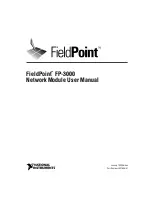
Chapter 23 Multicast
GS2200 Series User’s Guide
163
through it, picks out the group registration information, and configures multicasting accordingly.
IGMP snooping allows the Switch to learn multicast groups without you having to manually
configure them.
The Switch forwards multicast traffic destined for multicast groups (that it has learned from IGMP
snooping or that you have manually configured) to ports that are members of that group. IGMP
snooping generates no additional network traffic, allowing you to significantly reduce multicast
traffic passing through your Switch.
IGMP Snooping and VLANs
The Switch can perform IGMP snooping on up to 16 VLANs. You can configure the Switch to
automatically learn multicast group membership of any VLANs. The Switch then performs IGMP
snooping on the first 16 VLANs that send IGMP packets. This is referred to as auto mode.
Alternatively, you can specify the VLANs that IGMP snooping should be performed on. This is
referred to as fixed mode. In fixed mode the Switch does not learn multicast group membership of
any VLANs other than those explicitly added as an IGMP snooping VLAN.
MVR Overview
Multicast VLAN Registration (MVR) is designed for applications (such as Media-on-Demand (MoD))
that use multicast traffic across an Ethernet ring-based service provider network.
MVR allows one single multicast VLAN to be shared among different subscriber VLANs on the
network. While isolated in different subscriber VLANs, connected devices can subscribe to and
unsubscribe from the multicast stream in the multicast VLAN. This improves bandwidth utilization
with reduced multicast traffic in the subscriber VLANs and simplifies multicast group management.
MVR only responds to IGMP join and leave control messages from multicast groups that are
configured under MVR. Join and leave reports from other multicast groups are managed by IGMP
snooping.
The following figure shows a network example. The subscriber VLAN (1, 2 and 3) information is
hidden from the streaming media server, S. In addition, the multicast VLAN information is only
visible to the Switch and S.
Figure 103
MVR Network Example
Types of MVR Ports
In MVR, a source port is a port on the Switch that can send and receive multicast traffic in a
multicast VLAN while a receiver port can only receive multicast traffic. Once configured, the Switch
maintains a forwarding table that matches the multicast stream to the associated multicast group.
Содержание GS2200 Series
Страница 15: ...15 PART I User s Guide...
Страница 16: ...16...
Страница 31: ...31 PART II Technical Reference...
Страница 32: ...32...
Страница 76: ...Chapter 8 Basic Setting GS2200 Series User s Guide 76...
Страница 92: ...Chapter 9 VLAN GS2200 Series User s Guide 92 Figure 60 Port Based VLAN Setup Port Isolation...
Страница 230: ...Chapter 29 Error Disable GS2200 Series User s Guide 230...
Страница 248: ...Chapter 33 ARP Learning GS2200 Series User s Guide 248...
Страница 302: ...Appendix A Changing a Fuse GS2200 Series User s Guide 302...
Страница 306: ...Appendix B Common Services GS2200 Series User s Guide 306...
Страница 309: ...Appendix C Legal Information GS2200 Series User s Guide 309 ROHS...
Страница 310: ...Appendix C Legal Information GS2200 Series User s Guide 310...
Страница 320: ...Index GS2200 Series User s Guide 320...
















































